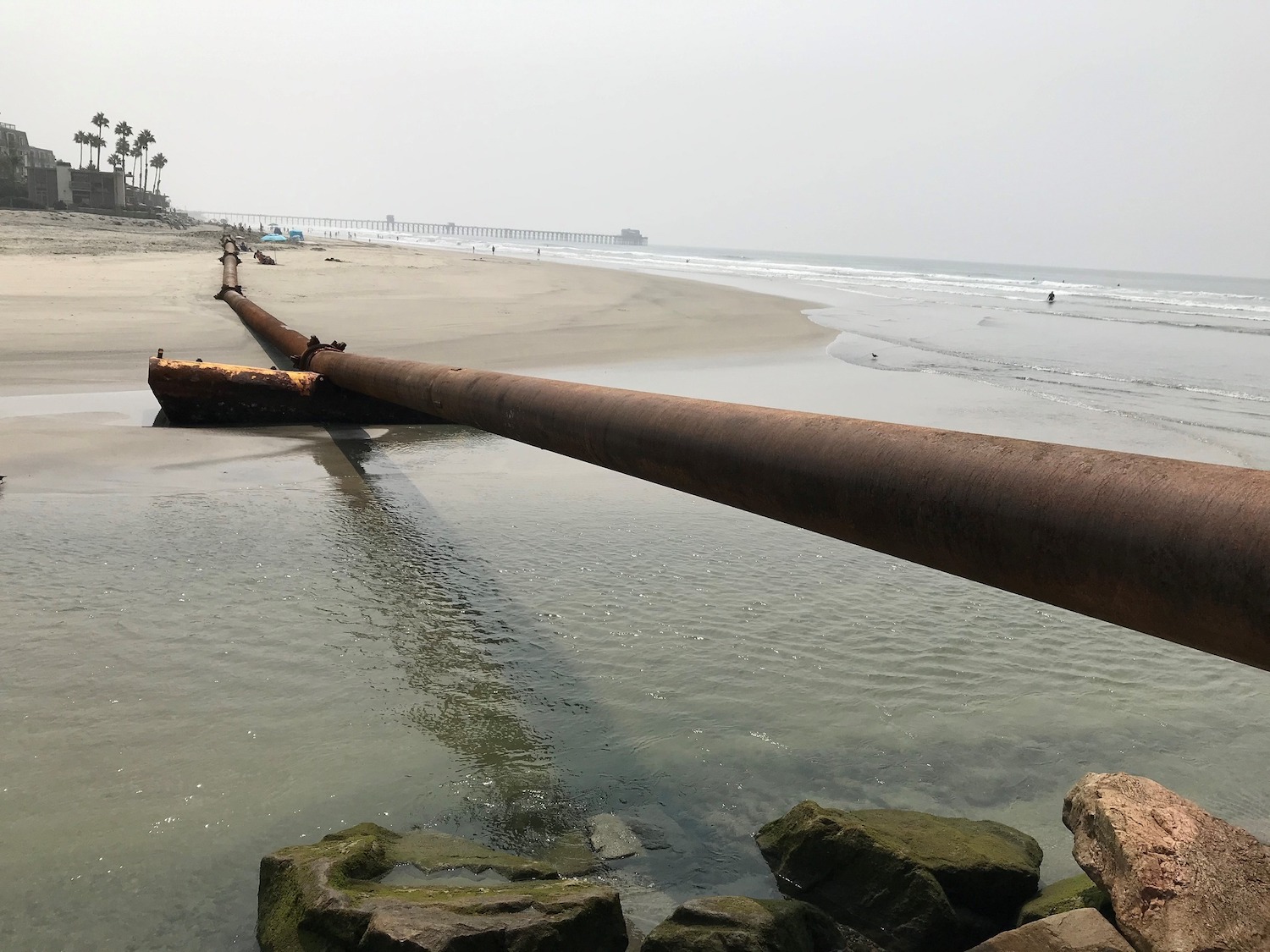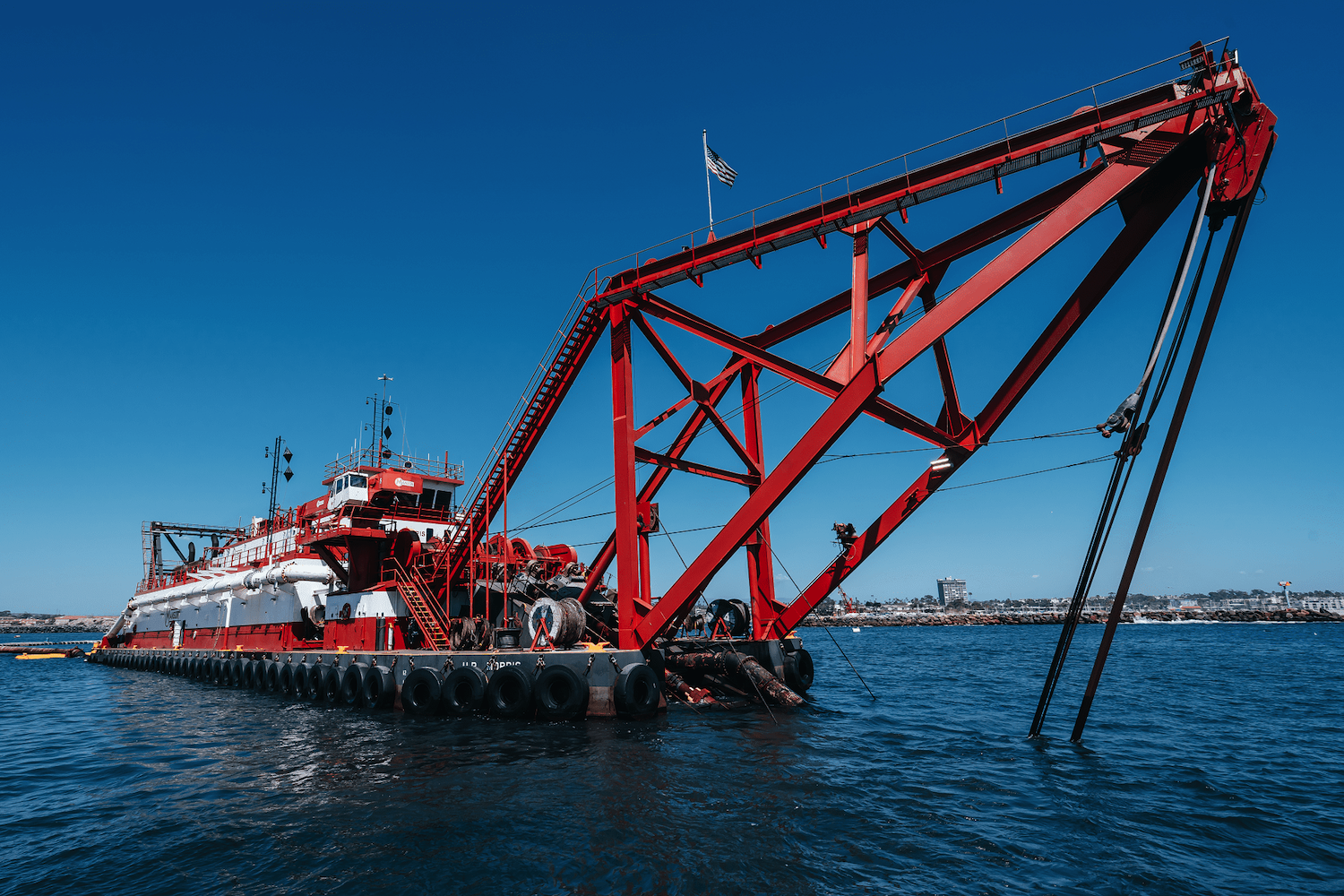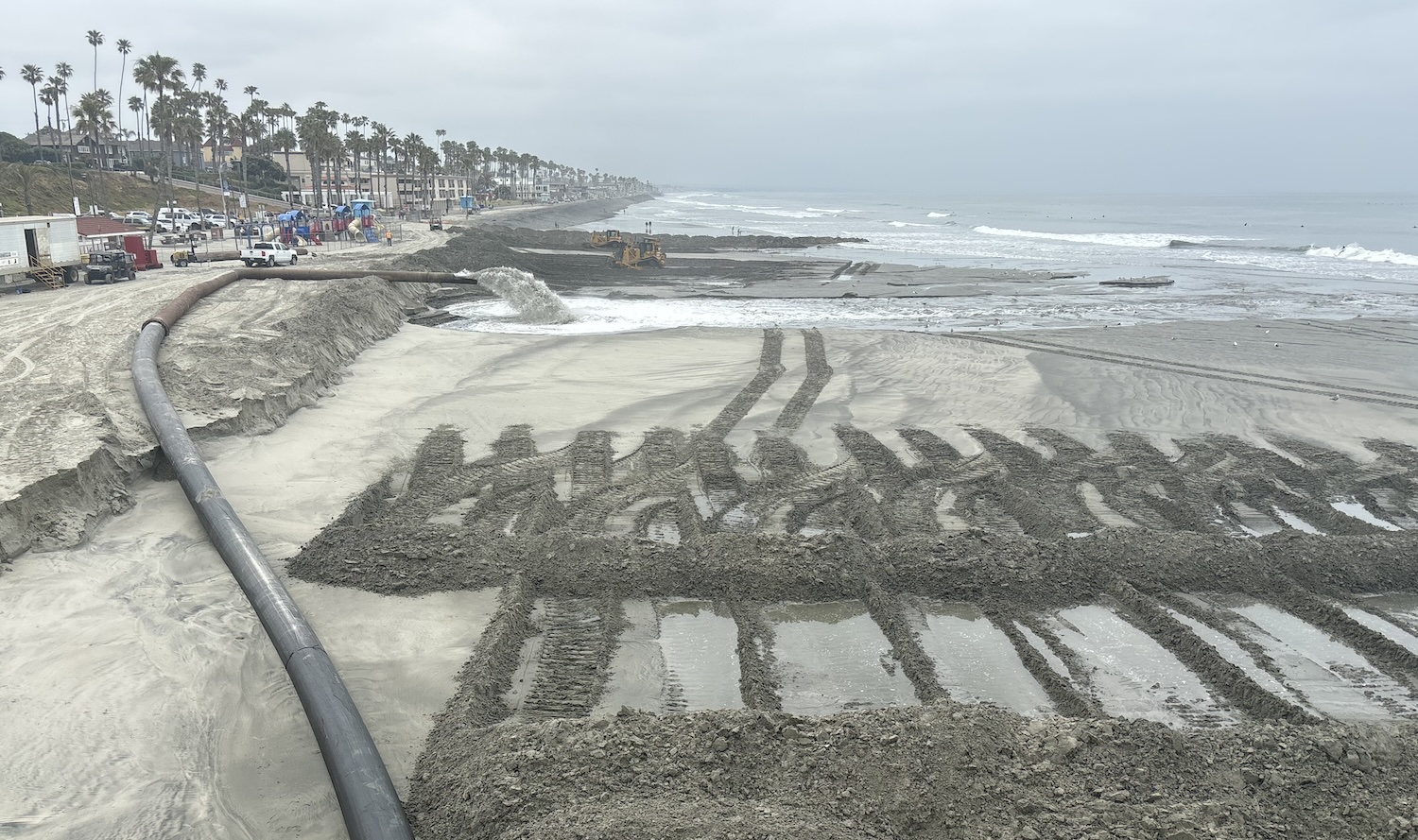Visit many beaches in North County come springtime, and you’ll spot what looks like the spine of a sea monster or ribs from a shipwreck floating offshore near the pier.
The twisting, scaly apparatus is part of an ocean dredge designed to scoop sand from the seafloor and dump it on the nearby shoreline. Why? San Diego’s northernmost beaches are disappearing at alarming rates—and nature can’t replenish them fast enough. So we humans have to do it ourselves.
As the planet warms from human-caused climate change, ice at the Earth’s poles melts, causing sea levels to rise. A warmer planet also brings more catastrophic storms barrelling toward California’s coastline. All combined, the ocean is eating away at beaches and coastal cliffs, threatening the future of beach town economies. Many consider beach building—also known as beach nourishment—as California’s main defense against these threats.

Oceanside’s famous surf beaches can already be wiped out by one stormy winter, when waves are the strongest. The energy of that curling water claws at the sand built up during the summertime, when the Pacific is kinder toward the continent—pacified, like its namesake.
It may be hard to fathom, but California’s coastal zone is starved of sand. Rivers used to nourish beaches like a one-way conveyor of crushed land pouring into the sea. But California dammed most of its rivers as populations and development boomed and, especially in Southern California, the demand for fresh water outweighed pretty much anything else.
“There just isn’t enough sediment that makes its way onto the coast anymore to create beaches naturally,” says Jayme Timberlake, the city of Oceanside’s coastal zone administrator.
The creeks and streams that do reach the Pacific Ocean in North County pool into lagoons and estuaries, then bottleneck through manmade jetties beneath a bridge or a road.

Oceanside’s natural source of beach sand—the Santa Margarita River—no longer spills its sediments directly onto the shoreline, as nature intended. The US Military plopped Oceanside Harbor in the middle of a natural estuary around World War II. If the US Army Corps of Engineers didn’t have to scoop the river sand from the harbor to keep it navigable every year, Oceanside’s waterfront may have already been underwater.
Instead, Oceanside asks the military for the sand they scrape out every year. And by way of a kind of gentlemen’s agreement, the military obliges. Around April or May, the Army Corps connects a long metal pipe from the harbor to the city’s shore and begins its annual beach feeding.

The process takes a couple of weeks. Wet sand spews from the end of the long dredge pipe, piling in turning rows like icing on a cake. Photos from this spring’s feeding show a magic transition from a hollowed-out basin of wet sand filled with cobblestones that aren’t so comfortable beneath a beach towel to a fat, fluffy, dry beach perfect for a postcard.
But all that new sand is gone within six to nine months, Timberlake says.
“Oceanside is well known for having good, consistent surf in winter and summer,” Timberlake continues. “But that means we have surf hitting and eroding our beaches constantly.”
Oceanside is uniquely dependent on (but lucky to have) this Army Corps umbilical cord it can’t afford to cut. That’s why the city is switching gears and attempting to build hard infrastructure out into open water to try and keep the sand close to shore. The project is called RE:BEACH, and the city has hired a team of Australians to replicate beach widening projects done on the Gold Coast.

“We’re going to change the amount of wave action and erosion action that happens on the beach,” Timberlake says. “We’re hoping that year after year we won’t see the complete loss of beaches once again after every time we dredge.”
Other starving San Diego beach towns that don’t have a lagoon or a harbor to source from have to dredge their beach sand from the ocean floor. For the next 50 years, Encinitas and Solana Beach will pull its beach sand from ocean “borrow sites” under an agreement that had to go through the US Congress for approval. But cities can’t rely on these borrow sites forever, either.
For that kind of dredging, the Army Corps (or its contractor) uses a different kind of dredge—the floating variety mentioned earlier, where sand is basically vacuumed off the seafloor, then piped to the beach. Jim Fields, chief of the Army Corps’ navigation section for the Los Angeles district, has been dredging for 32 years. When I ask whether he’s seen an increase in the demand for beach sand dredging, Fields points to politics.

“It’s a social issue. Cities are becoming more politically active to support this for constituents, and the politicians listen,” Fields says. “But there’s an economic benefit to the region [in] having someplace like the beach to go to.”
There was a time when beaches maintained themselves, Fields adds. But those days are over. We’ve already over-borrowed from some of the underwater places coastal cities depend on for beach sand.
PARTNER CONTENT
“In certain borrow areas, we go back to look at them and see big sections are gone because we’ve taken so much sand out of them, there’s no way to get it back,” explains Timberlake, who used to work for the city of Encinitas.
She says one borrow site called SO-6, located just off the mouth of the San Luis Rey River, is completely tapped out. Someone will have to head out on a ship to drill the ocean floor to find more sand—and rescue the beaches that are so ingrained in San Diego’s identity.



